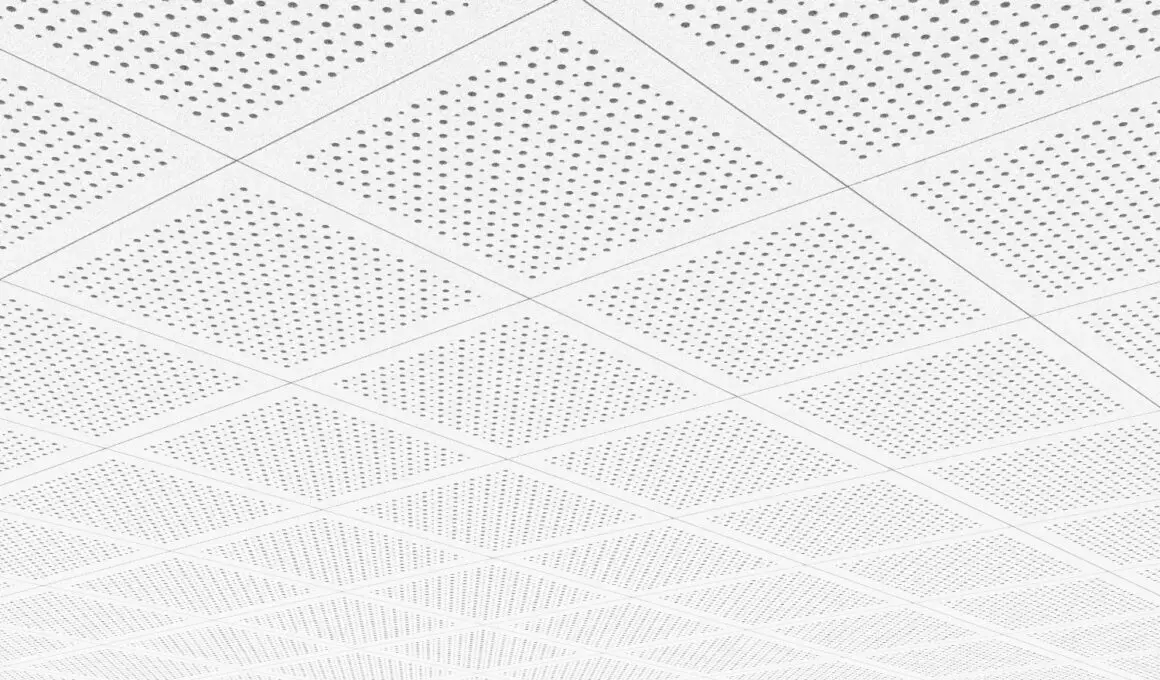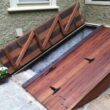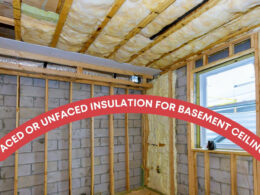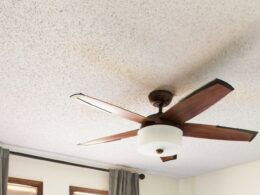Table of Contents Show
As a seasoned homeowner and professional contractor, I’ve encountered a variety of challenges in house projects, but one question that frequently arises is: “Are ceiling tiles made of asbestos?”
This concern is especially prevalent in older homes, where asbestos is commonly used in building materials for its durability and fire-resistant properties.
Understanding whether your ceiling tiles contain asbestos is crucial, not just for the integrity of your home renovation projects, but more importantly, for the health and safety of everyone involved.
In this article, I aim to provide clear, straightforward information to help homeowners and fellow contractors identify asbestos in ceiling tiles and understand the steps necessary for safe handling and removal.
Are Ceiling Tiles Asbestos?
No, not all ceiling tiles contain asbestos. However, in homes or buildings constructed before the 1980s, ceiling tiles may contain asbestos, a material used for its fire-resistant properties. It’s important to identify the age of the ceiling tiles to assess the likelihood of asbestos presence. If your home or building dates back to this period, it’s advisable to have the tiles professionally tested for asbestos. Modern ceiling tiles are typically asbestos-free, adhering to current health and safety regulations.
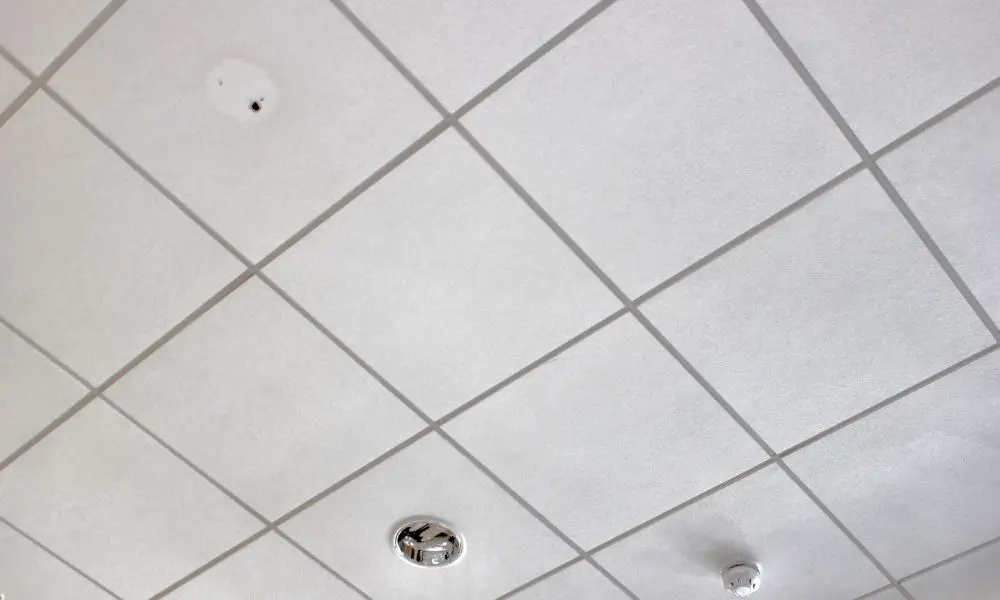
Identifying Asbestos in Ceiling Tiles
Identifying asbestos in ceiling tiles can be challenging, as it’s not always visible to the naked eye. However, there are certain characteristics and signs to look out for:
Appearance
Asbestos-containing ceiling tiles are often:
- Older tiles are typically found in buildings constructed before the 1980s.
- Generally white or off-white, with a slightly mottled texture.
- They may appear more fibrous or have a slightly fuzzy surface compared to modern tiles.
Common Signs
- Age of Building: Asbestos was widely used in buildings constructed before the 1980s.
- Deterioration: Look for signs of wear, such as crumbling or damaged tiles, which may release asbestos fibers.
- Stamp or Markings: Older tiles might have a manufacturer’s stamp indicating the presence of asbestos.
Remember, it’s difficult to confirm the presence of asbestos just by looking. If you suspect your ceiling tiles contain asbestos, the safest approach is to have them tested by a professional.
Removal and Disposal of Asbestos Ceiling Tiles
The removal and disposal of asbestos-containing ceiling tiles require a cautious and well-regulated approach to ensure safety. Always engage a licensed asbestos removal specialist. They possess the expertise, equipment, and legal authorization to handle asbestos safely.
Professionals will use protective gear, including respirators and disposable suits, and will seal off the area to prevent asbestos fibers from spreading.
Removal Process
- The area is wetted to minimize fiber release.
- Tiles are carefully removed, avoiding breakage.
- Removed materials are placed in sealed, labeled asbestos waste bags.
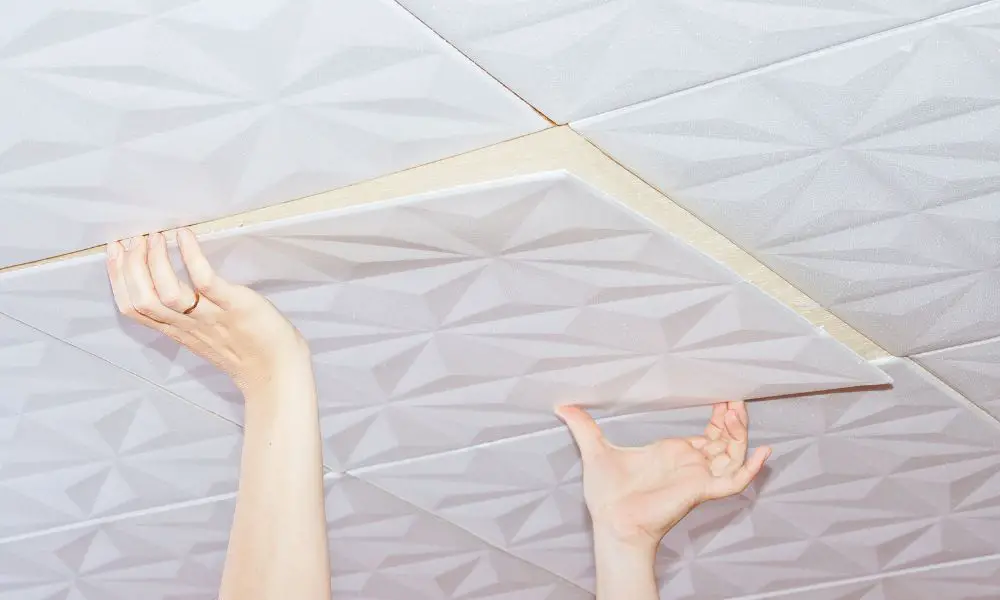
Disposal
- Asbestos waste is transported by licensed carriers.
- Disposal occurs at designated facilities that can safely handle hazardous materials.
- Post-Removal Inspection: After removal, the area is thoroughly cleaned and inspected to ensure all asbestos has been eliminated.
Given the health risks associated with asbestos, it’s crucial to avoid DIY removal. Relying on professionals ensures compliance with regulations and the safety of all occupants.
Alternatives to Asbestos Ceiling Tiles
Modern advancements have introduced several safer and more effective alternatives to asbestos ceiling tiles:
1. Fiberglass Tiles
Known for their sound absorption qualities, fiberglass tiles are a common alternative. They are non-toxic, fire-resistant, and provide excellent insulation.
2. Mineral Fiber Tiles
Made from recycled materials, these tiles offer fire resistance and soundproofing similar to asbestos tiles but without the health risks. They are also moisture-resistant, making them suitable for humid environments.
3. Gypsum Board Ceiling Tiles
Gypsum tiles are made from a naturally occurring mineral. They are fire-resistant and offer a smooth, clean aesthetic. Additionally, they are easy to install and paint.
4. Metal Ceiling Tiles
These tiles are durable and resistant to both fire and moisture. Metal tiles can also add a modern, sleek look to any space.
5. Wood Fiber Tiles
For those who prefer a natural look, wood fiber tiles are a great choice. They offer moderate fire resistance and can add a warm, organic feel to interiors.
Each of these alternatives provides a safe, stylish, and practical solution for ceilings in both residential and commercial properties.






